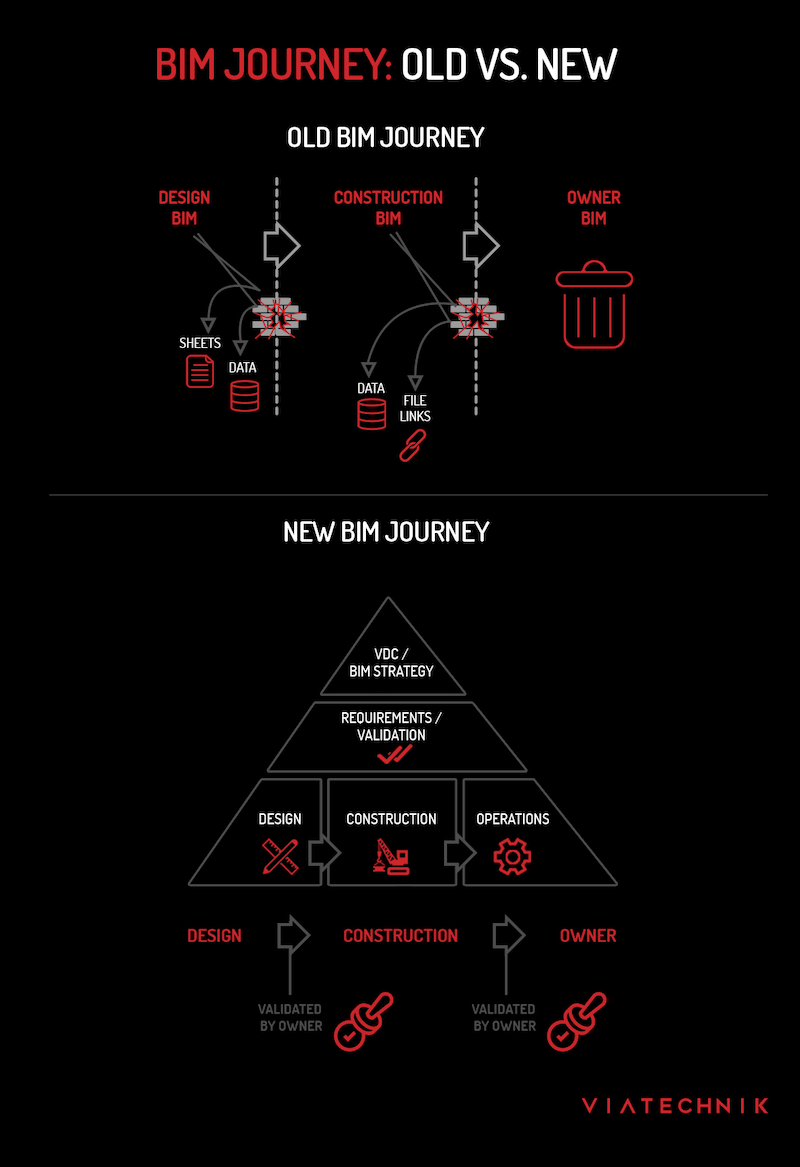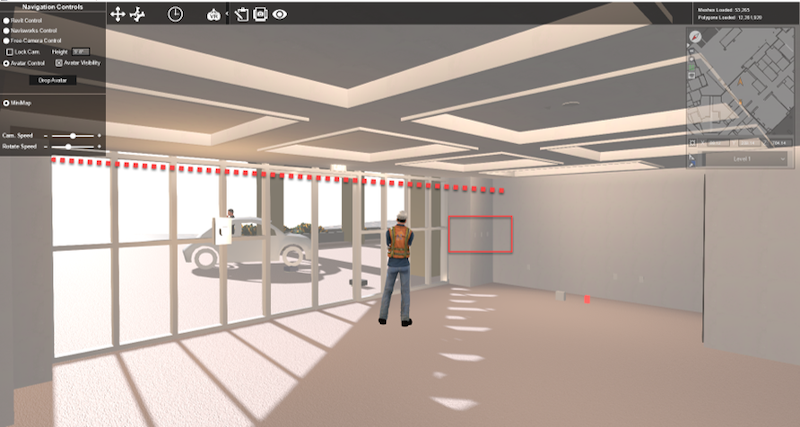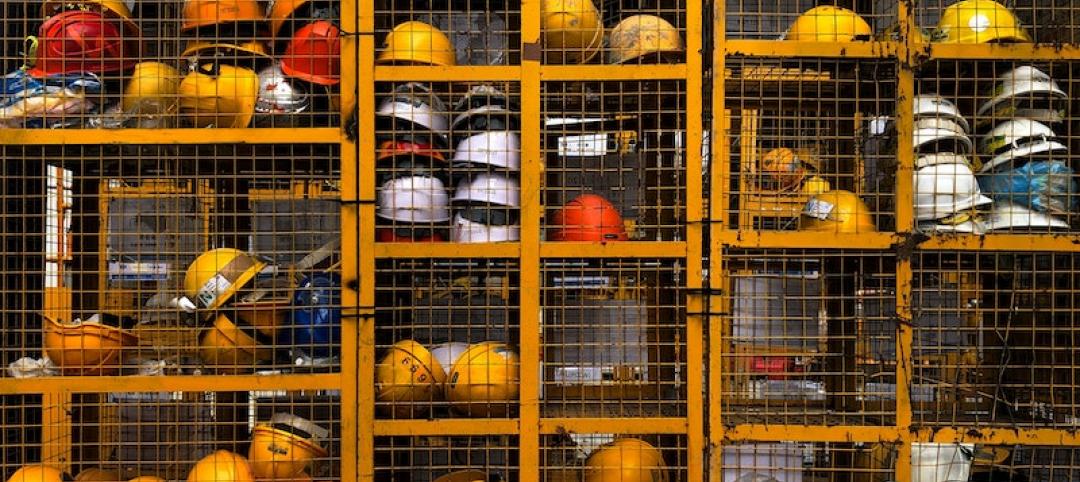Construction is a risky business. The sheer amount of capital required for each project means that a single failure can pose enormous financial risk. We all heard the tragic Hard Rock Cafe collapse causing death and injuries last year in New Orleans due to poor design. The investigation revealed potential safety issues in the building due to the engineer's failure to properly review the steel frame layout and inadequate horizontal beams and pole jacks to support the structure. With an estimated loss of $6 million, there’s a lesson for everyone in this story - regardless of size, any construction project, without proper project planning, review, inspection and coordination, puts itself at equal risk.
Markups to Mock-ups
As we enter the new decade, handwriting markups on a physical printed drawing set is almost forgotten history. Digital 2D shop drawing review is the industry standard and in order to flesh out the design details, projects commonly develop a fully detailed model for mock-ups. This practice offers all stakeholders the opportunity to provide focused feedback to improve the building performance both aesthetically and functionally.
Compared to creating a full model mock-up, the 2D design review method is easy and the upfront cost is low. However, the 2D shop drawings can be hard to visualize, requiring a depth of experience with “reading” 2D drawings. Some issues might therefore be omitted by the engineer and cause bigger problems down the road. Moreover, the resolution process for these problems - resubmission review - is often delayed due to this unclear information or the RFIs involved.
Model-Based Design Review
Model based design review can mitigate the shortcomings of 2D shop drawing review by overlaying the design and review processes. By using 3D BIM representations of the building to analyze and coordinate design decisions, the design intent is never severed from conversations on constructability and fabrication. It allows for a comprehensive and accurate review of the design intent, including component attributes, which in turn reduces the review cost and time per submittal. Different design options and alternatives may be easily modeled and changed in real-time during design review based on end users and/or owner feedback. What used to take weeks of back and forth through 2D drawings can be resolved within a week.
Phases of Design Review
Traditional BIM method segregates models from phase to phase without effective overall planning or communication among all the stakeholders which is the root cause of repetitive modeling or redesign. Owners are rarely involved during the model development process and hence not aware of the values of model and data. As a result, most of the models handed over to owners are archived without being utilized ever again.
On the contrary, the models used in this new method scale up in detail as the design progresses. The team can build on the steady foundation of what was already modeled as more complex decisions are made. The initial design model, for example, can be very simple. It is more important in this stage that the space be easily visualized in 3D in order to spot conflicts and allow stakeholders to inhabit the space. In design development, different design options need to be iterated in real time to reflect the owner’s feedback. This process of creating options is more cost effective within the looser constraints of a 3D model.
In the construction documentation phase, collaboration expands to include the architect/engineers/general contractors/subcontractors/owners. By conducting the review with a 3D model, the designer can have a better understanding of the whole space and adjust the design quickly based on all the constraints. Ultimately, the model will be developed to a LOD 400 standard which allows contractors and subs to directly use it for fabrication purposes. In a way we are able to simply build the model as designed, thereby reducing the number of changes and decisions that need to be made in the field.
In the operation phase, owners will be provided with an opportunity to utilize or modify the models developed from earlier phases for facility management. This model based design review process is taking a holistic approach of involving all stakeholders from the initial project planning phase and the feedback loop can be reapplied taking into consideration feedback from all possible channels especially the owners.
 Old vs. New BIM Journey. Photo: VIATechnik
Old vs. New BIM Journey. Photo: VIATechnik
Case Studies
The improved speed and accuracy of model-based design review can also play an important role during the shop drawing review phase by greatly reducing the engineer’s drawing approval process and making it easier to spot mistakes. Below on the right is an approved steel shop drawing by the structural engineer which states that all the steel elevations have been verified. But on the left, in the model, there is a 2” gap between the embeds and the joist seat. If the engineer had visually checked the model, this integrity issue would have been easily spotted and addressed.
 Identifying shop drawing elevation issue from BIM360 Viewer, Photo: VIATechnik
Identifying shop drawing elevation issue from BIM360 Viewer, Photo: VIATechnik
Below is an example of how model-based design review can help identify potential constructability issues. The beam is penetrating the tilt-up panel in the model. Structurally speaking, this meets the design requirements; but in the field, it will be very hard for the team to build, requiring a beam pocket in order for the beam to pass through the concrete tilt-up panel. If this can be identified early, the tilt panel crew can work around them and the GC can start planning other potential issues.
 Identifying constructability issue from BIM360 Viewer, Photo: VIATechnik
Identifying constructability issue from BIM360 Viewer, Photo: VIATechnik
When the architect/engineer rejects the submittal and requests a “revise and resubmit,” model-based design review allows for easy and quick adjustment. The subcontractors receive a more vivid visual to help understand the design intent and the requested changes. Below are two animations showing how the slope of the panel needs to be adjusted and its potential effect on the steel in order to maintain the roof hip line design.
 Live comments for design review in Navisworks Manage, Photo: VIATechnik
Live comments for design review in Navisworks Manage, Photo: VIATechnik
Sometimes constructability issues require the end user to identify; architects and engineers, in many cases, cannot understand all of the nuances of how a completed building will be used. For example, the lab room below has all the racking systems in place and there is no obvious conflict. But in design review the owner pointed out that the distance between rackings is smaller than the typical forklift/other vehicles the engineer’s use on site which will affect the future operations. In this case, model-based design review allowed for end users, who typically are not as well-versed in 2D “reading” as AEC professionals, to identify a spatial conflict that does not show up on any sort of clash detection.
 Owner identifying operation issue in Fuzor, Photo: VIATechnik
Owner identifying operation issue in Fuzor, Photo: VIATechnik
Risk and Return on Investment
While there is an overhead cost associated with the benefits above, the return on investment is clear. What we spend on overhead can be made back through reduced time and resources spent on traditional design review. The overhead cost of model-based design review includes the design software subscription, the interactive review space and any hardware upgrades that enable the processing of large detailed files. On the operation side, competent team members are crucial to manipulate, navigate and review 3D models. Model content must be controlled in order for model-based design review to work as intended. These team members, including contractor/subcontractor teams, must have a strong sense of coordination and understand how buildings and facilities integrate with each other. While some cloud-based model solutions can assist with this through version control functions, it is up to the subcontractor to make sure the model is up to date. This speaks to an additional risk: it is important to make sure that the model reflects the real design intent and matches the field use drawing. We can all be as careful as possible but making sure the information in the model can be fully translated to the field is something that still needs better solutions.
Looking Ahead: Model-Based Design Review and VR
Virtual reality integration is a compelling next step for model-based design review and its 3D visualizations. Different VR/AR devices are gaining more popularity in the industry, leading to many interesting test cases. The ability to see the space at all phases in such an immersive environment means owners can be involved even more in the project design. See example below for a senior living project. Our client used this VR model to review any potential design issues. The team identified conflicts between the ceiling height and the head of the window, switch height, columns directly in front of the window, and piping directly underneath the ductwork which makes them impossible to hang in the field.
Compared to the benefit it brings to the field and overall project quality, a onetime investment in the necessary hardware and software is relatively small. All stakeholders can be invited to VR review meetings to point out potential issues. The potential collaboration opportunities are immense given the right ground rules: first, it is better to finish the initial coordination to avoid distractions caused by small issues; second, an efficient agenda setup is the key to success to make sure people don’t get distracted by the cool visuals and go off track.
 VR review in Fuzor, Photo: VIATechnik
VR review in Fuzor, Photo: VIATechnik
Conclusion
Reducing the risk inherent to the construction industry is a crucial point of attack for digital technology. As the industry becomes increasingly virtual and our designs more complex, we must find opportunities to leverage design tools to realize design intent. We cannot continue to force complex designs into 2D drawings that mask complexity to the detriment of the final product. Model-based design review helps us achieve this and more in a cost-effective way, allowing all stakeholders to engage with the design through an approachable medium. In the end, we will be able to judge a building by its model because the building will be the model - just as beautiful as it was intended to be.
More from Author
VIATechnik | Jul 17, 2023
Unlocking the power of digital twins: Maximizing success with OKRs
To effectively capitalize on digital twin technology, owners can align their efforts using objectives and key results (OKRs).
VIATechnik | Apr 19, 2022
VDC maturity and the key to driving better, more predictable outcomes
While more stakeholders across the AEC value chain embrace the concept of virtual design and construction, what is driving the vastly different results that organizations achieve? The answer lies within an assessment of VDC maturity.
VIATechnik | Sep 28, 2021
Getting diversity, equity, and inclusion going in AEC firms
As a professional services organization built on attracting the best and brightest talent, VIATechnik relies on finding new ways to do just that. Here are some tips that we’ve learned through our diversity, equity, and inclusion (DE&I) journey.
VIATechnik | Mar 2, 2021
Retail expectations vs reality in 2021
The reality of retail success in 2021 is proving to be based on a formula of mixing digital with the physical in pursuit of convenience.
VIATechnik | Nov 23, 2020
Agility is the game-changer in the post-COVID world
There has been a fundamental shift in how human beings live, work, and play. The built environment must shift in response.
VIATechnik | Nov 17, 2020
The coming automation of retail brick and mortar
The demise of retail brick and mortar is overstated and unwarranted - we see digital transformation offering brick and mortar a path forward for the physical store.
VIATechnik | Oct 1, 2020
Smart buildings stand on good data
The coming disruption of owning and operating a building and how to stay ahead through BIM.
VIATechnik | Jul 15, 2020
Building pride: A Reflection of LGBTQ rights in construction
The Supreme Court did its job. The rest is up to us.
VIATechnik | May 8, 2020
Data centers as a service: The next big opportunity for design teams
As data centers compete to process more data with lower latency, the AEC industry is ideally positioned to develop design standards that ensure long-term flexibility.
VIATechnik | Mar 17, 2020
A tree grows in Stanford: CIFE, VDC, and where it all began
As our industry adopts VDC as standard practice, it is important to remember where these ideas began and continue to emanate from today.















